|
BULB LOG 11 -- 12th March 08
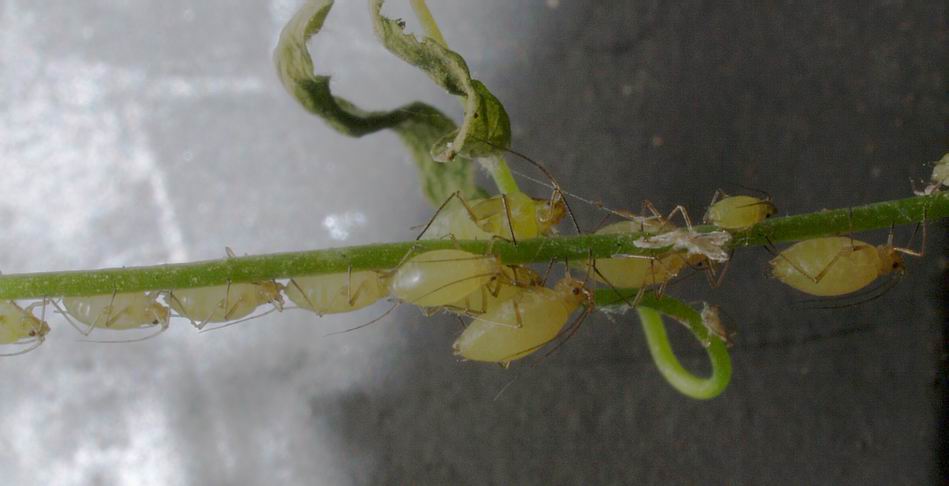
Aphid family
A timely reminder that aphids are a constant threat - even in winter - all they need is a few mild days and they produce a family. You would wonder where they come from. I suspect that some can hibernate underground on the bulbs themselves and when the temperature rises out they come. This colony appeared on a seedling of Tropaeolum azureum and I wiped them out, literally, after I took the pictures.
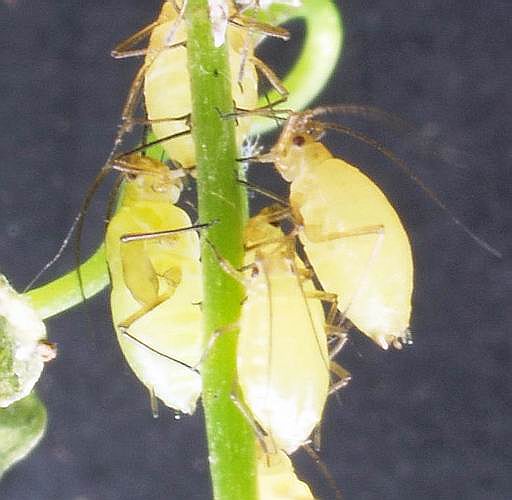
Aphids sucking sap
In this close up you can see their proboscis stuck into the stem of the plant so that the sap can be sucked out. It does not take many aphids to do terrible damage to small seedlings and they certainly seem to prefer the sweet juicy young plants to the older ones. I had a good look around and to my relief these seem to be the only ones present but if I see any more I will spray again with a systemic insecticide. The biggest threat from the aphids is not the damage they do by sucking sap but the possibility of bringing in and spreading virus. There has been an interesting thread running on the forum regarding the number of virused bulbs being sold and this has always upset me. Many of the popular mass produced cultivars are virused but because they are strong and vigorous plants they do not succumb very quickly to the disease. From them it can be passed on to other more vulnerable plants like so many of the species bulbs we love and these will die within a few years of contracting the virus. Some of the ways t
he virus can be transferred include aphids, slugs, eelworms and nematodes - also if we handle a virused plant we can then infect the next few plants we touch. I believe it is best to destroy virused plants and I would certainly be complaining if I bought virused plants and am ruthless in destroying any that I suspect of having a virus.
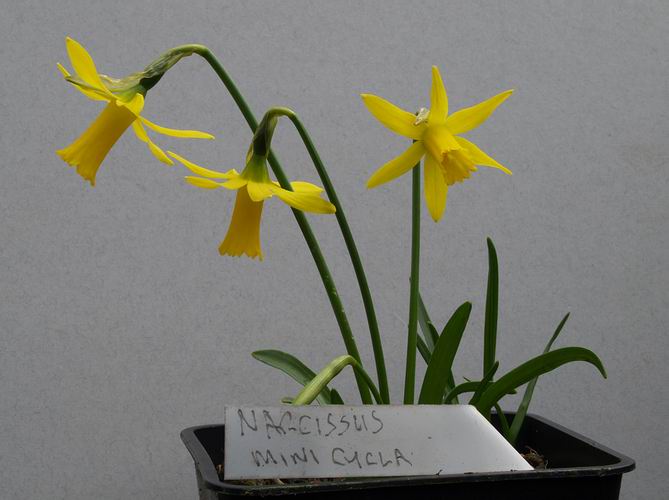
Narcissus 'Mini Cycla'
Last week I mentioned Narcissus 'Mini Cycla' and here is one of my pots showing that it is indeed a wee beauty even though it is not so vigorous a plant. I have never managed to get more than about ten flowering stems on it despite my best efforts. Many of the new bulbs with the same parents that are appearing now are going to be much better increasers - the vigour of youth. I do believe that bulbs get old and even though we may have offsets to grow on they are not young bulbs but clones of the old bulb so they do not have the strength of new seed raised stock.
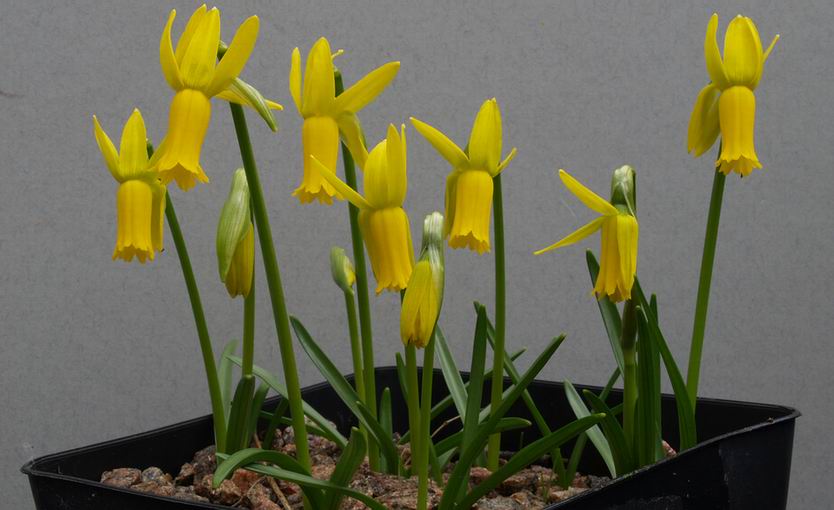
Narcissus cyclamineus
This is one of my pots of Narcissus cyclamineus which normally grows in an open plunge frame but I took it into the bulb house and I have crossed it with Narcissus asturiensis. I will keep it under glass for about a week where the extra warmth should help the pollen tube grow down and fertilise the ovules which I hope will give me a good crop of seed.
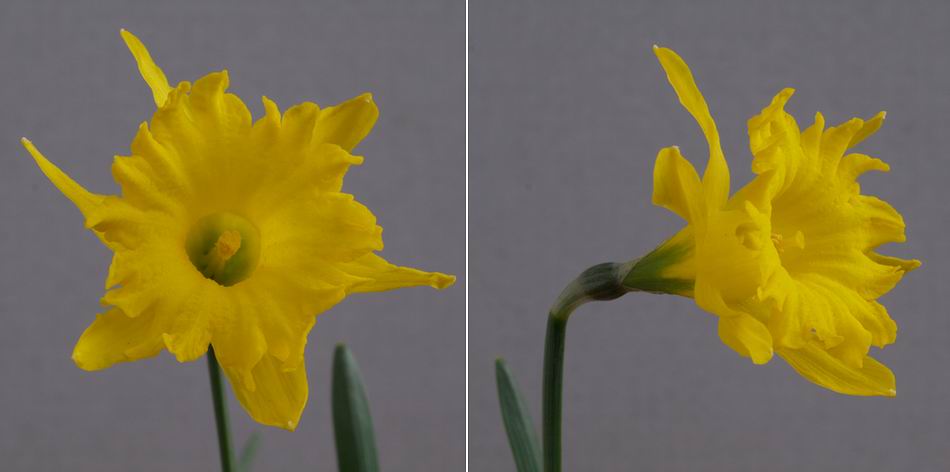
Narcissus jacetanus
I have a number of pots of Narcissus jacetanus mostly raised from wild collected seed. It is a close relative of Narcissus asturiensis if not a subspecies of it, depending on which taxonomist you believe, so I have also crossed it to Narcissus cyclamineus. I thought that the flower above had a particularly short and frilly corona.
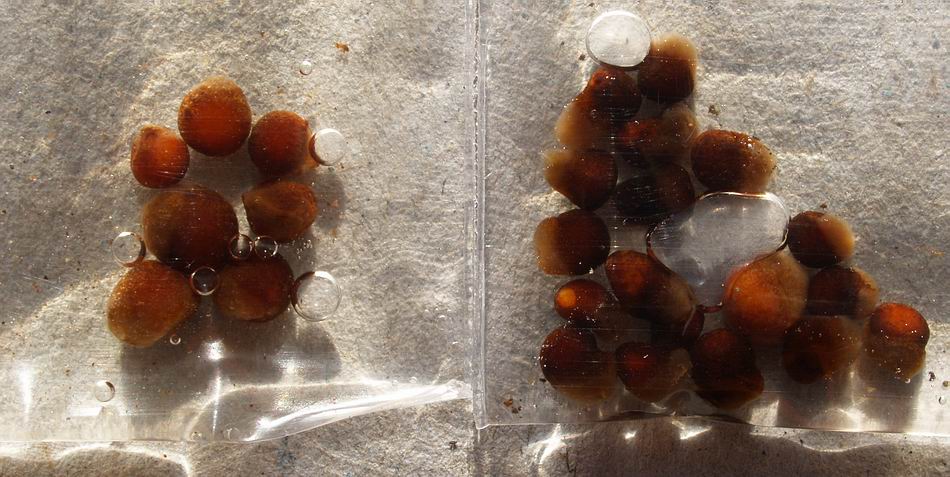
Colchicum seeds soaking
In my talks and writings I am forever telling people to look carefully at their plants, to think about what they are seeing and then draw the proper conclusions. Well sometimes I should listen to myself - some things are so blindingly obvious that you cannot see them. I have never managed to get a regular germination of Colchicum seeds - despite trying for many years I have more pots of un-germinated Colchicum seed than any other. Why has it taken me until now to think about soaking them? I soak plenty other stored seeds before I sow them with excellent results. Any way it finally struck me this week, when I received several packets of Colchicum seeds to soak them and they have plumped up beautifully as you can see above. I soaked them for nearly two whole days then rinsed them off and have now sown them at depth half way down the pot - watch this space to see if this will give me any better results.
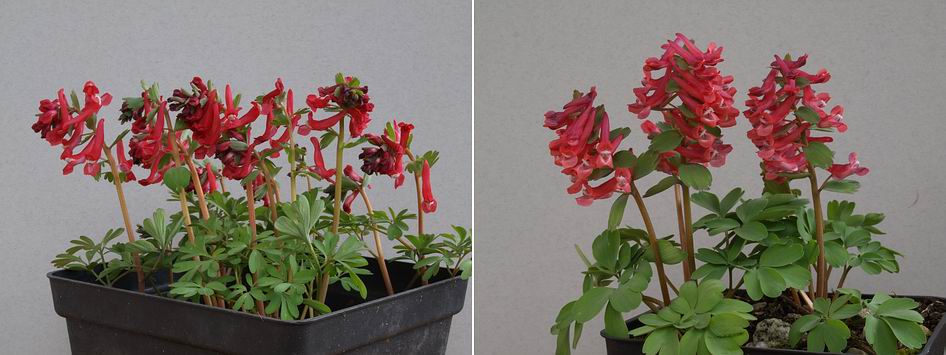
Corydalis solida forms
There are heaps of corydalis appearing all over the garden in both the beds and pots. The one on the left is a pot full of small bulbs of Corydalis 'Craigton Red' - it is the brightest red that I have seen in any corydalis while the right hand one is fairly typical of the warm pinks.
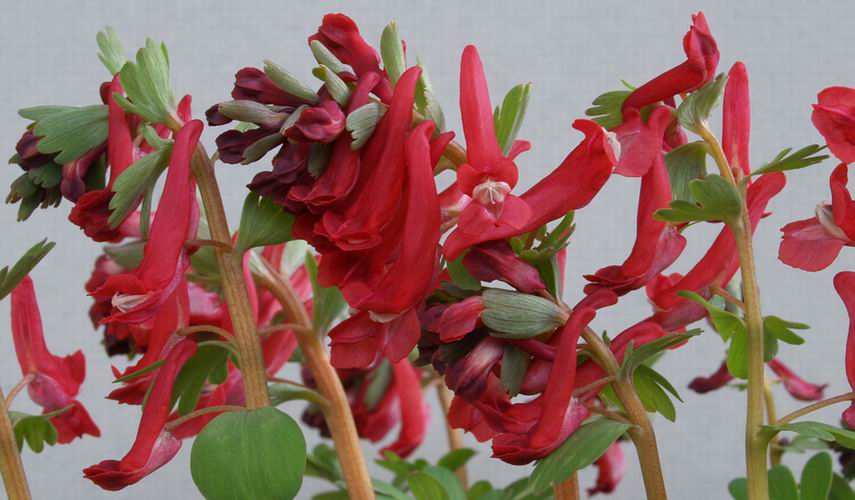
Corydalis 'Craigton Red'
A closer look at Corydalis 'Craigton Red' and this picture is a true representation of the colour which is close to postbox red when it first opens. The spikes of mature bulbs have plenty of flowers and are held well above the leaves making it a very showy plant. I dare say I will show you it again when the ones in the garden are open.
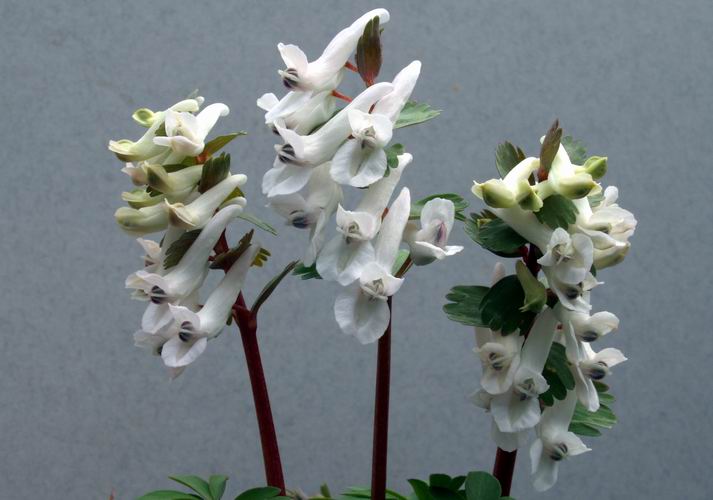
Corydalis solida white
I just love drifts of Corydalis in mixed colours and when there are whites among them it just lifts the effect to a whole new level of beauty - to this end I am trying to raise as many whites as I can from seed. My first white forms all came from Janis Ruksan's wonderful 'Penza' strain of Corydalis solida and if you get seed from a white plant you usually get a number of white seedlings.
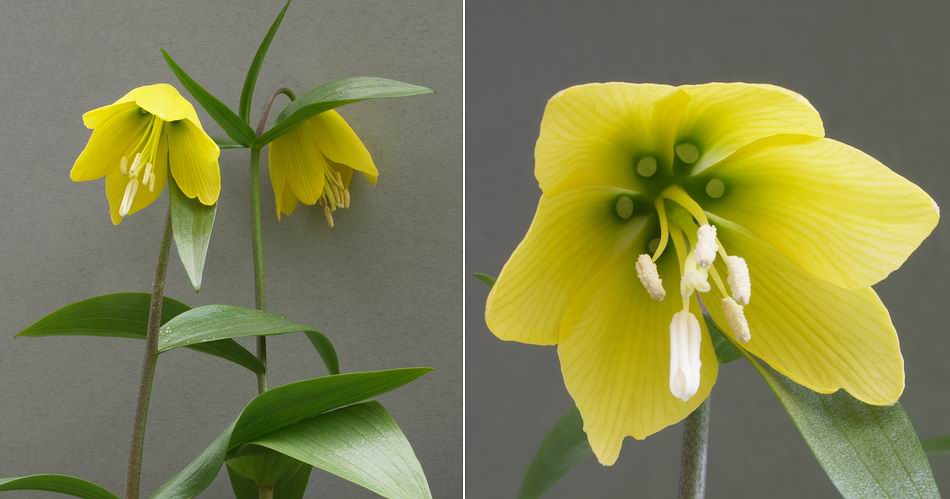
Fritillaria chitralensis
I always like to tell you about my failures as well as my successes in the bulb log and this year I have gone backwards with Fritillaria chitralensis. Last year I had two large flowering spikes with about five flowers on each but this year I have only two stems with single flowers.
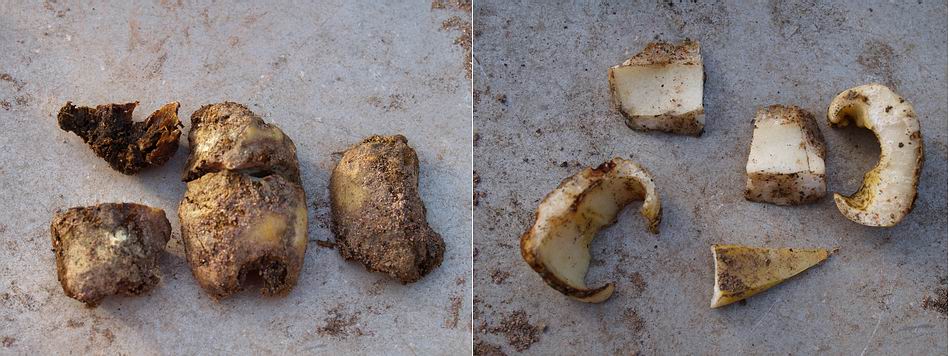
Rotten F. chitarensis bulb
Last summer when I repotted F. chitarensis my two bulbs had both produced a reasonably large offset which I planted into a separate pot. I noticed at the time of repotting that there were some signs of rot on the base of both the mature bulbs so treated them with sulphur. I was worried when I saw no signs of growth in the big pot, in fact, instead of the gravel starting to heave with the growth, the centre of the pot actually sunk a tiny bit- not a good sign. I tipped it out to discover that the rot had taken hold and almost destroyed the bubs. In an attempt to recover something more from the situation I have cut up the rotten bubs discarding all the rotten parts and planting the healthy parts into a fairly dry medium. I now hope that I may get some buds forming on the cut up pieces that will result in some new young bulbs. It is always worrying when this sort of failure happens, especially when I have done nothing different from previous years, luckily I do have the two flowering offsets pictured above and a
couple of pots of seedlings coming on so I have not lost this very rare and beautiful Fritillaria.
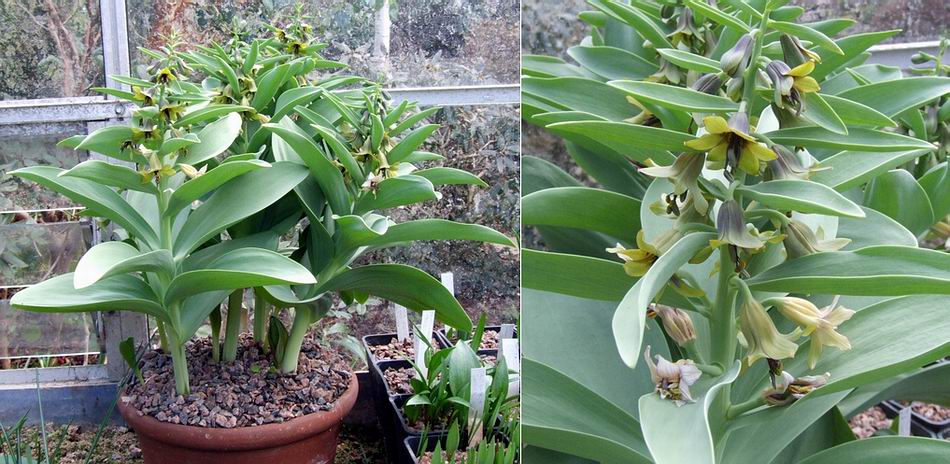
Fritillaria sewerzowii
People have been discussing Fritillaria sewerzowii on the forum and most have been commenting on it opening its flowers before the stem extends above the leaves - I do not have this problem. I suspect it may be to do with the temperatures - when it is too warm the flowers try and open before the plant gets a chance to grow. The other discussions were on the time it takes to reach flowering size from seed - I manage to get the first flowers in five years. Not increasing was the other topic discussed and while most of my forms stay as single bulbs this one increases - every year it makes a flowering sized offset.
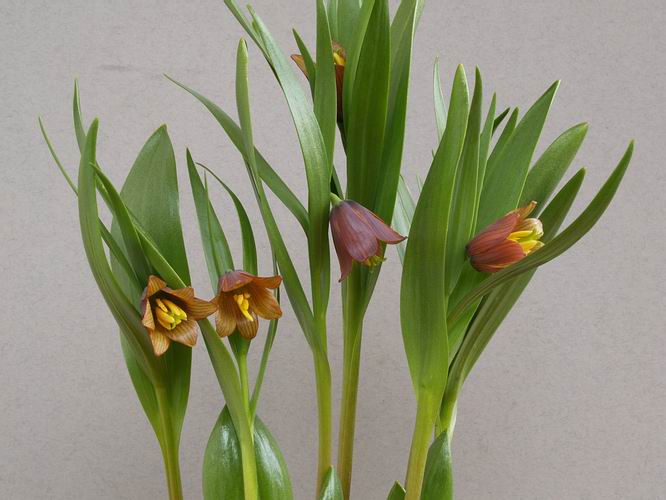
Fritillaria minuta
Not the most showy of frits but I think that Fritillaria minuta has a fabulous colour. Unfortunately the small flowers tend to hide inside the rather leafy stems but once you seek them out they are very nice indeed.
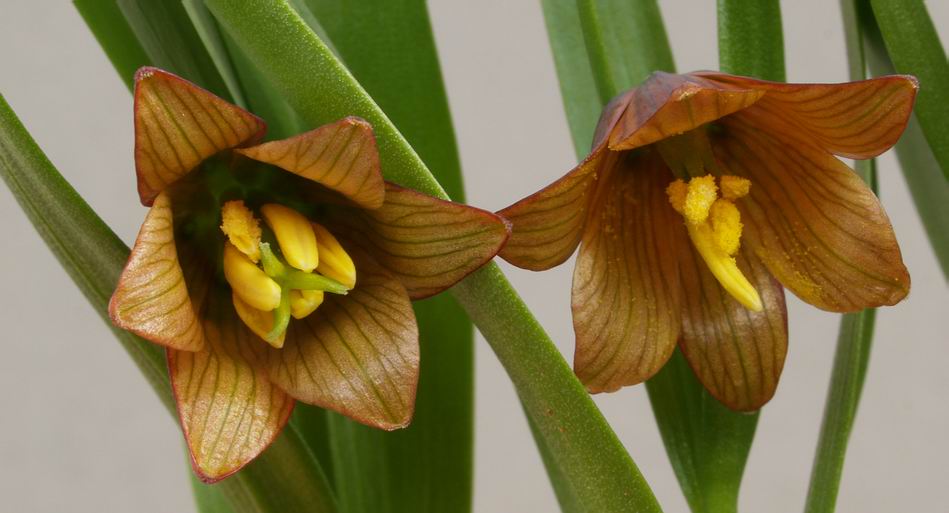
Fritillaria minuta flowers
They are the most amazing orangey brown with stripes. Notice that the flower on the right has no style this is a fairly common thing with fritillaries, especially with young or immature bulbs.
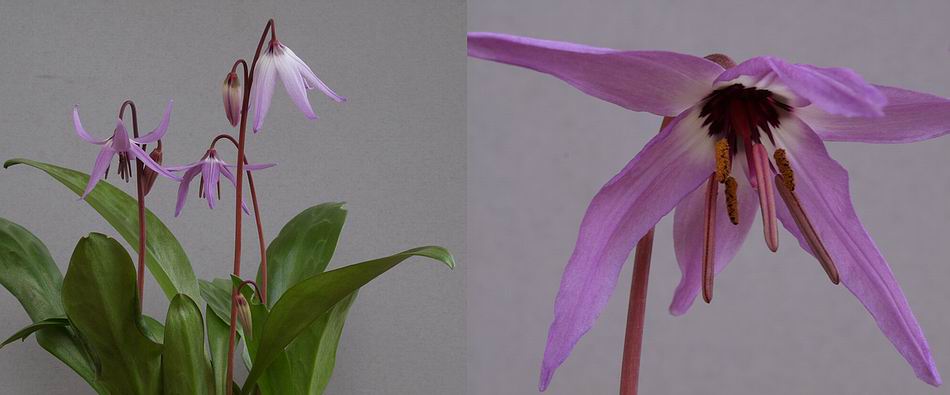
Erythronium hendersonii
My first Erythronium hendersonii flowers have opened this week - watch this space.
^ back to the top ^
|

